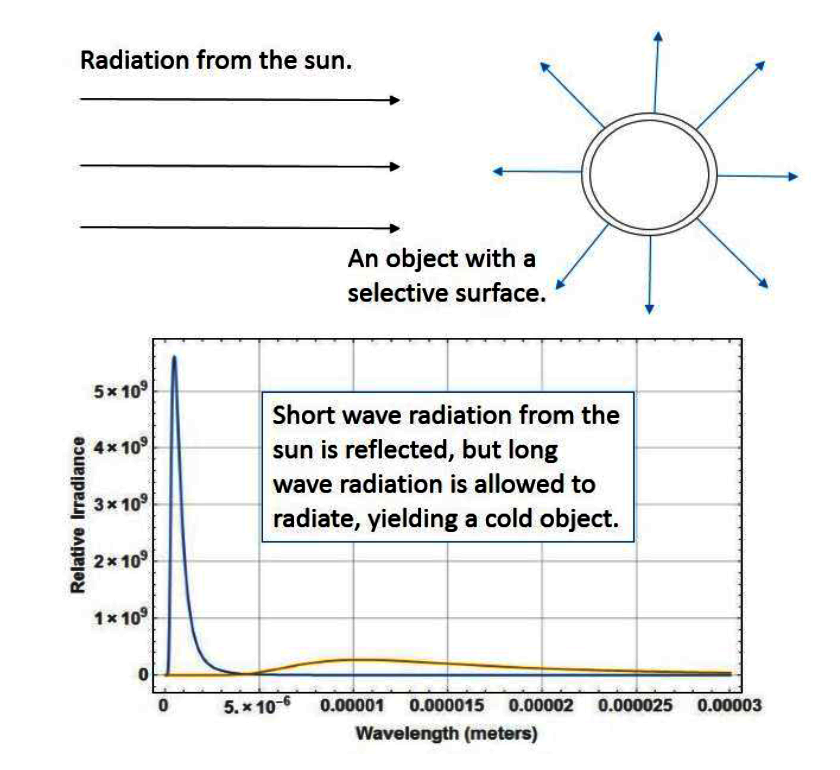Robert Youngquist
NASA Kennedy Space Center
Youngquist 2015 Phase I Final Report
Description
Selective surfaces have wavelength dependent emissivity/absorption. These surfaces can be designed to reflect solar radiation, while maximizing infrared emittance, yielding a cooling effect even in sunlight. On earth cooling to -50 °C below ambient has been achieved, but in space, outside of the atmosphere, theory using ideal materials has predicted a maximum cooling to 40 K! If this result holds up for real world materials and conditions, then superconducting systems and cryogenic storage can be achieved in space without active cooling. Such a result would enable long term cryogenic storage in deep space and the use of large scale superconducting systems for such applications as galactic cosmic radiation (GCR) shielding and large scale energy storage. We propose, during this Phase I effort, to theoretically model the performance of real world selective surfaces to see if superconducting temperatures can be passively achieved in a deep space environment at 1 A.U. from the sun.
































